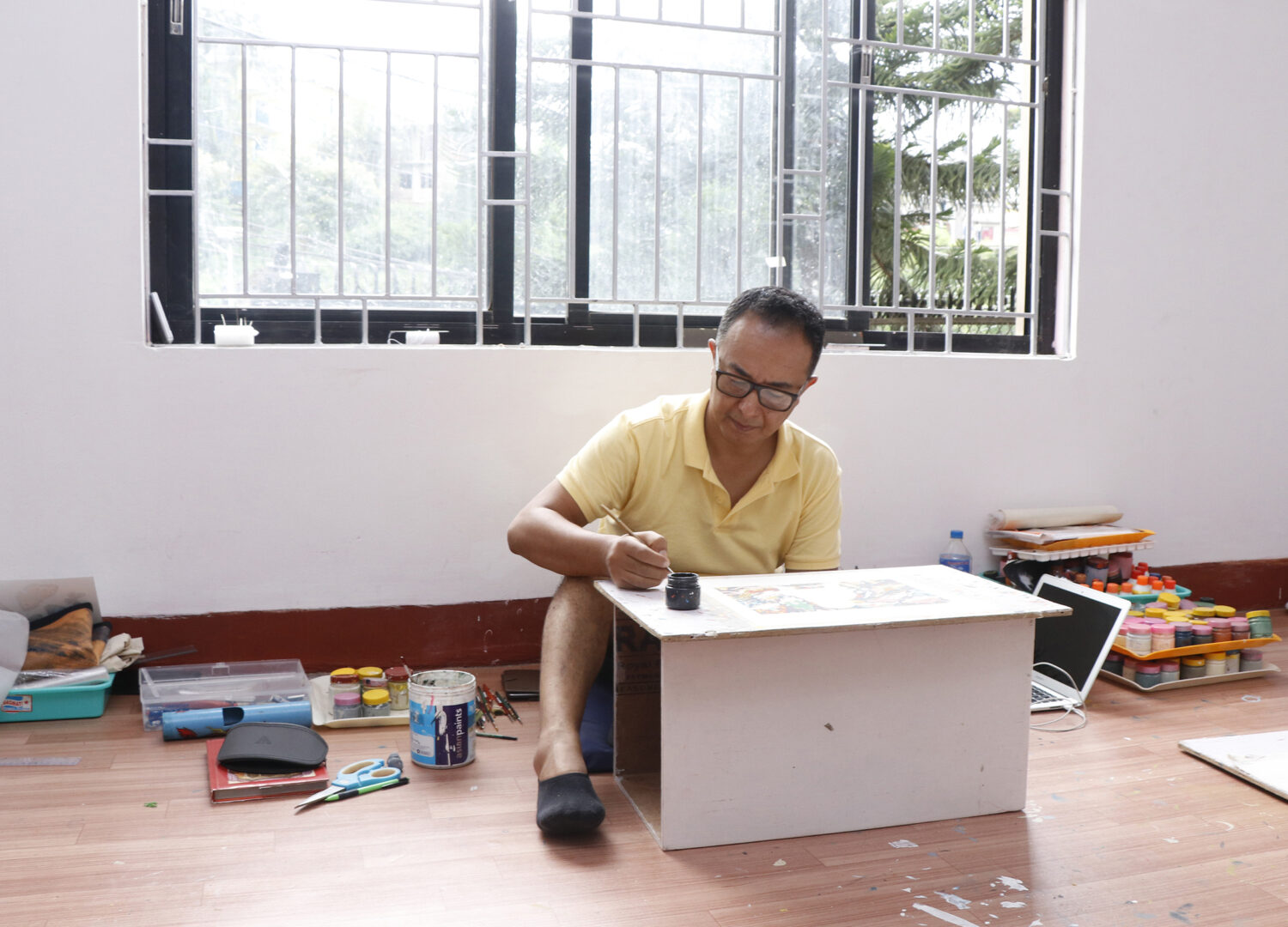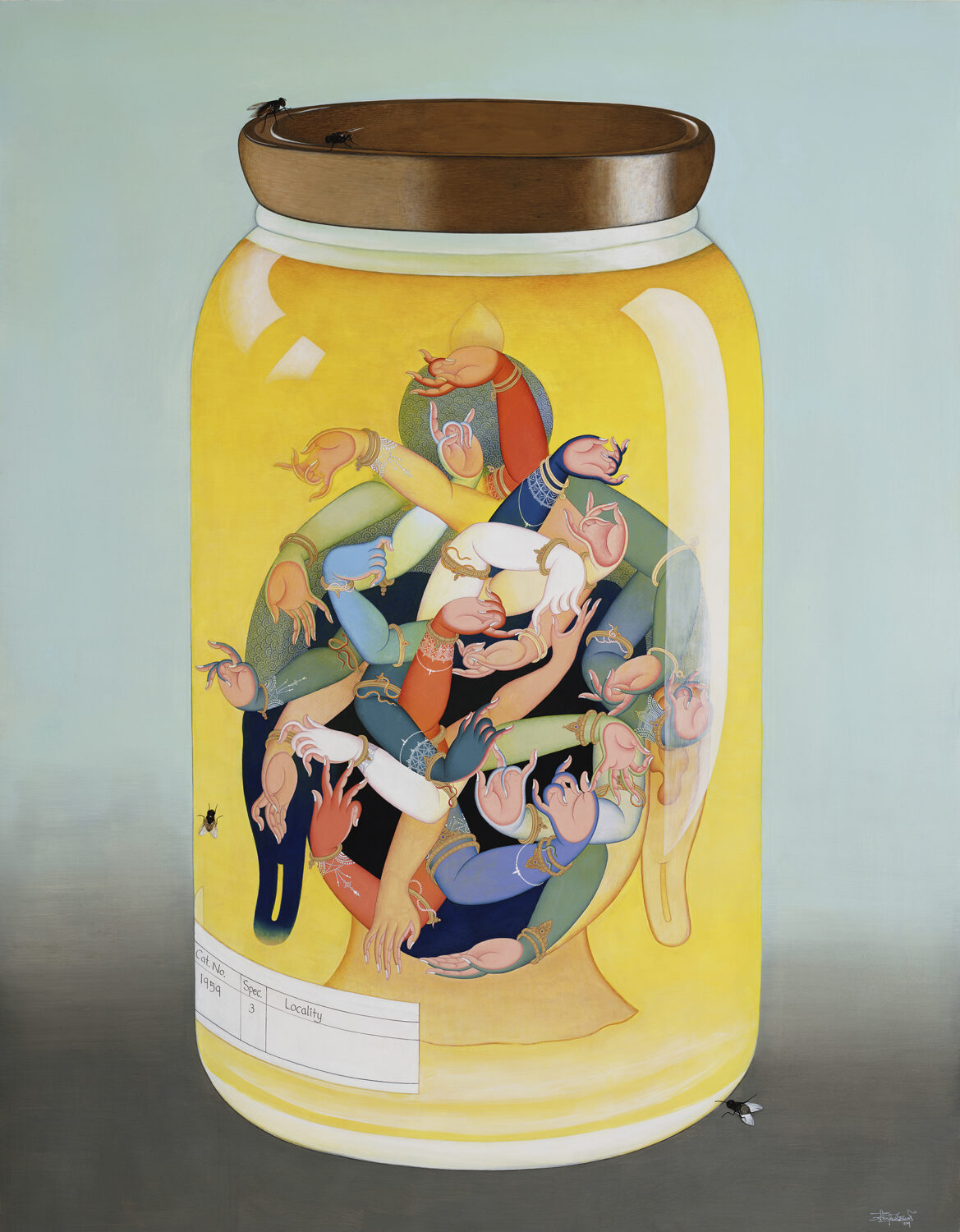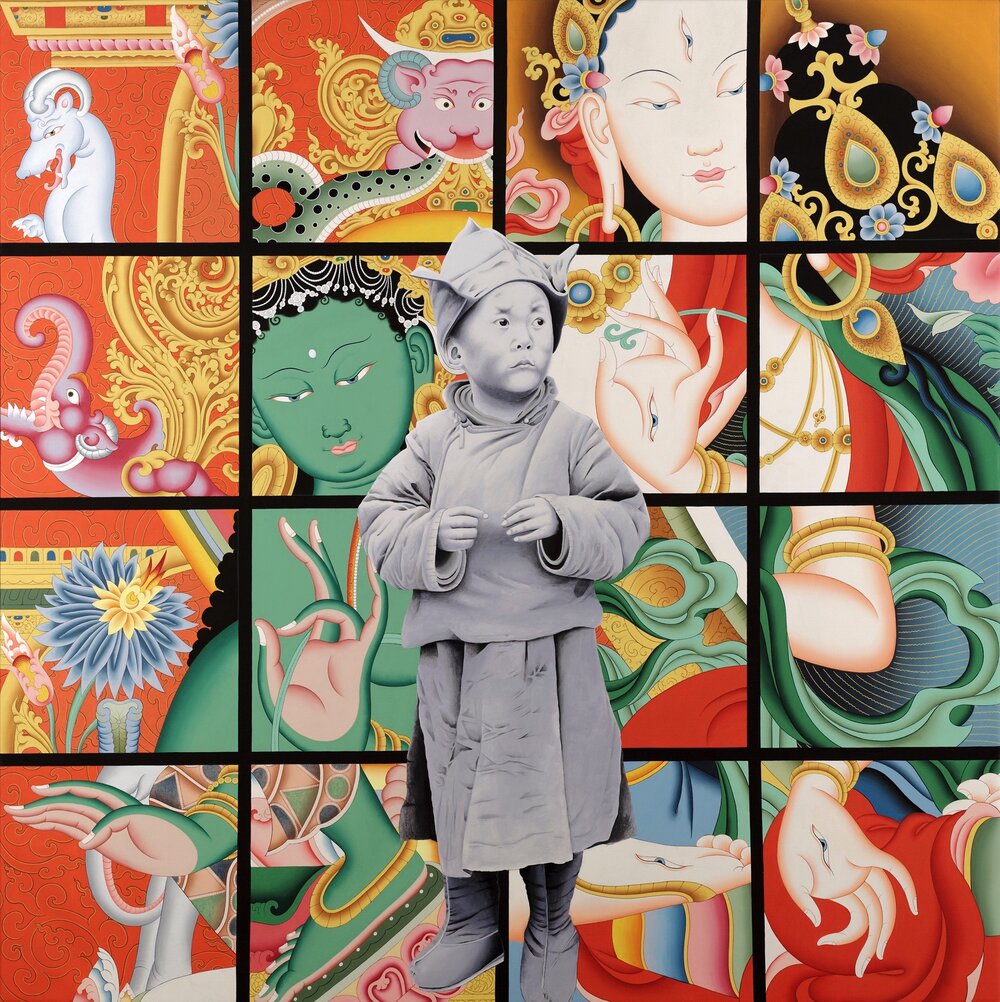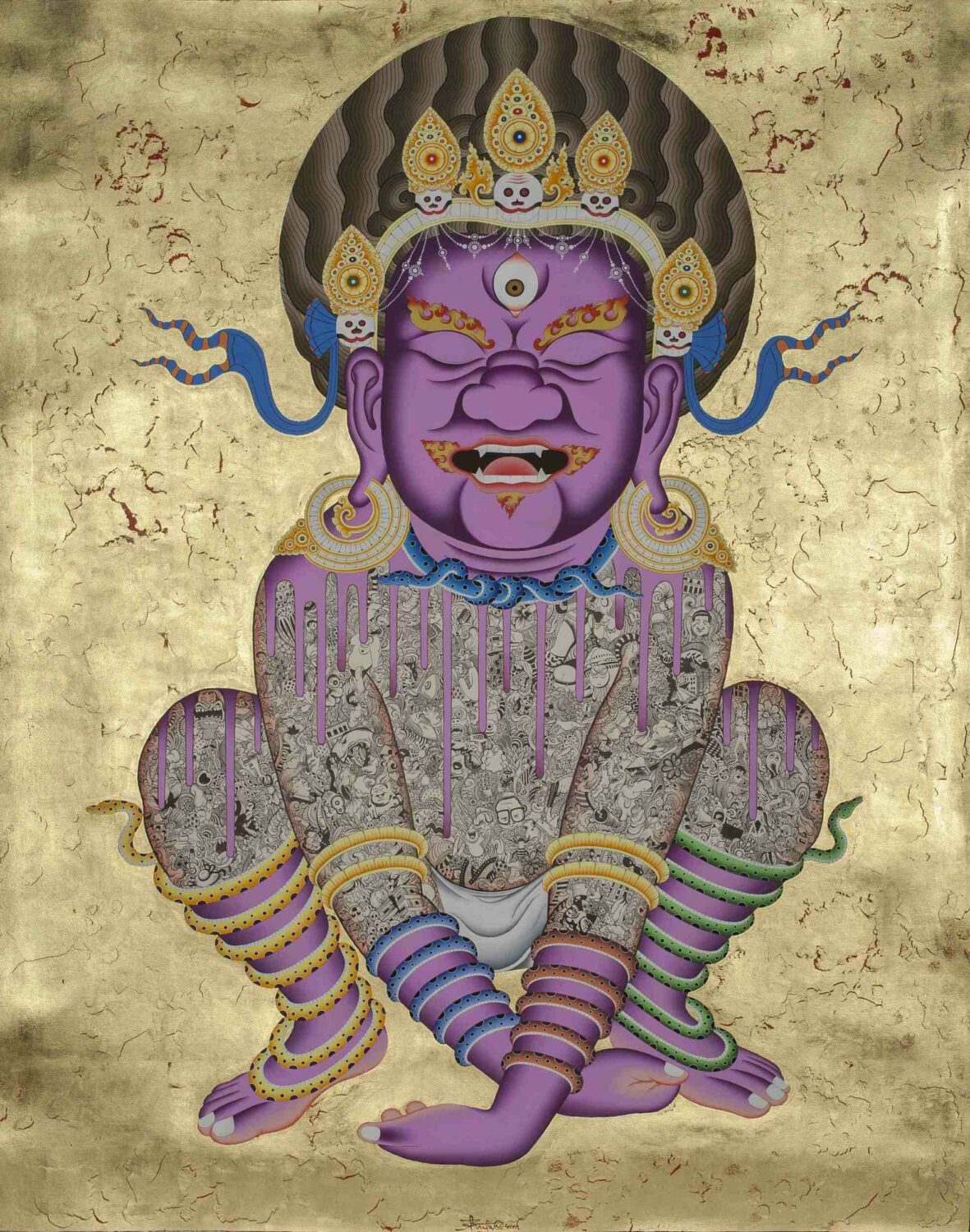Sheelasha Rajbhandari & Hit Man Gurung On Curating Nepal’s Inaugural Pavilion At The 59th Venice Biennale
By Something CuratedDebuting at the 59th Venice Biennale, which commences on 23 April 2022, Nepal is set to present its first-ever national pavilion at the prestigious international exhibition this year. Entitled Tales of Muted Spirits – Dispersed Threads – Twisted Shangri-La, the Nepal Pavilion is co-curated by Sheelasha Rajbhandari and Hit Man Gurung, and will feature the work of artist Tsherin Sherpa. The inaugural presentation is hosted at Sant’Anna Project Space One, located in the area between the Arsenale and Giardini. Trained in the art of thangka painting, which comprises pigments meticulously applied onto cotton or silk appliqué, typically depicting a Buddhist deity, scene or mandala, Kathmandu born and based Tsherin Sherpa is regarded today as one of Nepal’s leading contemporary artists.

Sherpa reimagines and reappropriates identities, symbols, colours, and gestures to surpass their chronological and cultural constrictions. His works offer an interplay and tension between the sacred and secular, traditional and contemporary, settlement and movement. The artist reflects: “International understanding of Nepali art remains plagued by a Western conceptualisation of the Himalayan region: a pervasive, romanticised vision that frames Nepal as static, pure and untouched by time and modernity. We need to create a space to reflect and re-evaluate these biases.” To learn more about the anticipated presentation in Venice, as well as Sherpa’s compelling practice, Something Curated spoke with the Nepal Pavilion’s curators Sheelasha Rajbhandari and Hit Man Gurung.

Something Curated: What does it mean to you to be curating the inaugural Nepal Pavilion at the Venice Biennale?
Sheelasha Rajbhandari & Hit Man Gurung: Both of us have been engaged in making and curating art rooted in our Indigenous traditions. We repeatedly encounter spaces both within Nepal and externally that fail to contextualise and give respect to the diversity of artistic expressions we practice. For us, Nepal’s participation in Venice is a culmination of many years of underappreciated labour of numerous Nepali artists. It is an opportunity to present how over centuries we have managed to sustain, transfigure, and extrapolate our traditions in manners that do not fit neatly into taxonomies fashioned by Western discourses. We want to bring our stories and cater to our peoples and in effect challenge the reductionist lens through which Nepal and the broader Himalayan region is perceived.

SC: What particularly interests you in Tsherin Sherpa’s practice and why is his voice important for us to focus on right now?
SR & HMG: Tsherin Sherpa’s works offer a critical look at the complexity of contemporary identities enmeshed in tradition, diaspora, and globalisation. Furthermore, as an artist who grew up in Kathmandu, worked in America, and is now back again, Sherpa’s itinerant life has parallels to the nomadic lifestyles of his ancestors as well as numerous Himalayan communities. Even within Nepal, many ethnic groups from the frontiers of the country are viewed with suspicion and discriminated against. His art furthermore speaks to migration, estrangement from one’s birthplace, and the emotions of non-belonging. In the process of assembling Nepal’s pavilion for Venice, we have come to appreciate his dedication to supporting the many artistic languages found in Nepal. His works also become conduit for a much larger discussion on how we should read as well as reevaluate our histories as seen in our arts.

SC: Can you give us some insight into the thinking behind the works included in the upcoming presentation?
SR & HMG: In contradiction to a mythical, Himalayan utopia, is the reality of an intricately interconnected peoples who have repeatedly experienced displacement, loss, and the insurmountable task of reconstituting their lives. From the 19th to 20th centuries many Indigenous groups in Nepal were purposefully excluded and oppressed through state mechanisms that benefited both regional and colonial powers. When opportunity arose to exploit their art and livelihood through international trade, it created a scenario that essentialised and packaged numerous art practices into consumable goods, while simultaneously eroding their spiritual and vernacular meanings for the people who produce them. Tsherin Sherpa will collaborate with artists across Nepal to draw upon materials from a shared history to implicate an intersectional and intertwined past that problematises contradictory conceptualisations of Nepal. In addition to artists, we are also in the process of working with scholars and researchers to compile photographs, stories, and songs that offer a more nuanced depth to the visual materials being exhibited.
Feature image: Tsherin Sherpa, Preservation Project No. 1, 2009. Courtesy of the artist and Rossi & Rossi